Evolutionary Ecology
The department of Evolutionary Ecology gathers complementary skills in behavioural ecology, population dynamics, population biology, community ecology, and methodology (statistics and modelling). The research done in the department aims at studying how animal species evolve in a changing world by understanding the causes of the evolution of traits, adaptations and interactions. For that, we consider different levels of organization from individuals to populations and communities. Because organisms cannot be considered isolated from other biotic factors, we consider pathogens but also competing species within communities.
We study how individuals adapt to their environments that are largely impacted by anthropic pressures, and how life history traits and behaviour evolve in response to these pressures. Although we mainly focus on phenotype, we more and more consider the mechanistic link between the genotype and the phenotype. We develop the theoretical framework of our discipline through a conceptual and modeling approach. In parallel, we test hypotheses that arise from theoretical predictions through experimental, comparative and observational approaches on different biological models (insects, birds, mammals). Experimental approaches are developed in the laboratory (insect model) and in natura (bird, insect and mammal models). Observational and comparative research is mainly concerned with vertebrates. Our approaches are also, and increasingly, interested in the mechanisms of adaptive responses. In addition to the classical approaches of demographic analysis and trait change, methods of ecophysiology, chemical ecology and molecular biology are used.
Our department hosts several long-term studies of wild populations of different species. These long-term studies offer a valuable way to understand how biotic and abiotic factors affect individuals’ life history traits, and the functioning of populations in natura. Five populations of mammalian species are thus monitored for several years (more than 40 years on roe deer, 30 on Alpine marmots, 25 years on cats, 16 years on zebras, and 20 years on impala). Two of our study sites (La Sassière in Vanoise National Park (Alpine marmots) and Hwange National Park) have been certified as “Site d’Etude en Ecologie Globale” (SEEG), and two (ZA “Hwange” and ZA “Antarctic and sub-Antarctic”) were certified as “Zone Atelier” by the CNRS.
The department of Evolutionary ecology is also largely involved in training activities. Lastly, we also have strong socio-economic relationships. Indeed, because we address questions of major societal interest (global warming, public health) we tightly collaborate with socio-economic partners (Office Français de la Biodiversité, Vanoise National Park, Hwange National Park in Zimbabwe, Office National des Forêts, etc.) and participate to general public and media events.
Publications
Display of 751 to 780 publications on 2449 in total
Analyzing patterns in population dynamics using repeated population surveys with three types of detection data
Ecological Indicators . 106 : 105546
Journal article
see the publicationThe time frame of home‐range studies: from function to utilization
Biological Reviews . 94 ( 6 ) : 1974-1982
DOI: 10.1111/brv.12545
Journal article
see the publicationRecommendations to address uncertainties in environmental risk assessment using toxicokinetic-toxicodynamic models
Scientific Reports . 9 ( 1 )
Journal article
see the publicationRight on track? Performance of satellite telemetry in terrestrial wildlife research
PLoS ONE . 14 ( 5 ) : e0216223
Journal article
see the publicationIntegrating population genetics to define conservation units from the core to the edge of Rhinolophus ferrumequinum western range
Ecology and Evolution . 9 : 2272–12290
DOI: 10.1002/ece3.5714
Journal article
see the publicationMore frequent extreme climate events stabilize reindeer population dynamics
Nature Communications . 10 : 1616
Journal article
see the publicationDoes harvesting amplify environmentally induced population fluctuations over time in marine and terrestrial species?
Journal of Applied Ecology . 56 ( 9 ) : 2186 - 2194
Journal article
see the publicationAccounting for interspecific competition and age structure in demographic analyses of density dependence improves predictions of fluctuations in population size
Ecology Letters . 22 ( 5 ) : 797 - 806
DOI: 10.1111/ele.13237
Journal article
see the publicationAssessing potential surrogates of macroinvertebrate diversity in North-African Mediterranean aquatic ecosystems
Ecological Indicators . 101 : 324-329
Journal article
see the publicationFlower phenology as a disruptor of the fruiting dynamics in temperate oak species
New Phytologist . 225 ( 3 ) : 1181-1192
DOI: 10.1111/nph.16224
Journal article
see the publicationApproche de Modélisation Hiérarchique pour la Description de l'Effet de la Compétition Interspécifique sur la Tolérance Chimique d'Herbacées
SEFA 2019 Lyon .
Conference paper
see the publicationA Bayesian framework for estimating parameters of a generic toxicokinetic model for the bioaccumulation of organic chemicals by benthic invertebrates: Proof of concept with PCB153 and two freshwater species
Ecotoxicology and Environmental Safety . 180 : 33-42
Journal article
see the publicationPhenotypic plasticity in the invasive pest Drosophila suzukii: activity rhythms and gene expression in response to temperature
Journal of Experimental Biology . 222 : jeb199398
DOI: 10.1242/jeb.199398
Journal article
see the publicationMechanistic, ecological, and evolutionary consequences of artificial light at night for insects: review and prospective
Entomologia Experimentalis et Applicata . 167 ( 1 ) : 37-58
DOI: 10.1111/eea.12754
Journal article
see the publicationDoes body growth impair immune function in a large herbivore?
Oecologia . 189 ( 1 ) : 55-68
Journal article
see the publicationPerformance of generation time approximations for extinction risk assessments
Journal of Applied Ecology . 56 ( 6 ) : 1436-1446
Journal article
see the publicationThe crustacean Armadillidium vulgare, a new promising model for the study of cellular senescence
DOI: 10.1101/583914
Preprint
see the publicationGenetic resistance against parasitism in female Mediterranean mouflon: Involvement of both neutral and adaptive genetic diversity
Labex EcoFect Annual Meeting .
Conference paper
see the publicationBack to the wild: does feralization impact the mandible of non-commensal house mice (Mus musculus domesticus)?
Biological Journal of the Linnean Society . 126 ( 3 ) : 471-486
Journal article
see the publicationCalcium stable isotopes place Devonian conodonts as first level consumers
Geochemical Perspectives Letters . 10 : 36-39
Journal article
see the publicationTransient growth-enhancing effects of elevated maternal thyroid hormones at no apparent oxidative cost during early postnatal period
Journal of Avian Biology . 50 ( 1 )
DOI: 10.1111/jav.01919
Journal article
see the publicationComparison of environmental, biological and anthropogenic causes of wildlife–vehicle collisions among three large herbivore species
Population Ecology . 62 ( 1 ) : 64-79
Journal article
see the publicationSwab cloths as a tool for revealing environmental contamination by Q fever in ruminant farms
Transboundary and emerging diseases . 66 : 1202-1209
DOI: 10.1111/tbed.13137
Journal article
see the publicationCan postfertile life stages evolve as an anticancer mechanism?
PLoS Biology . 17 ( 12 ) : e3000565
Journal article
see the publicationSlow life-history strategies are associated with negligible actuarial senescence in western Palaearctic salamanders
Proceedings of the Royal Society B: Biological Sciences . 286 ( 1909 ) : 20191498
Journal article
see the publicationSperm competition accentuates selection on ejaculate attributes.
Biology Letters . 15 ( 3 ) : 20180889
Journal article
see the publicationOutils d'observation des boiteries
Journées Nationales des Groupements Techniques Vétérinaires (JNGTV) . : np
Poster
see the publicationDoes grandparental care select for a longer lifespan in non-human mammals?
Biological Journal of the Linnean Society .
Journal article
see the publicationHormonal pleiotropy and the evolution of allocation trade‐offs
Evolution - International Journal of Organic Evolution . 73 ( 4 ) : 661-674
DOI: 10.1111/evo.13693
Journal article
see the publication
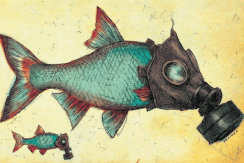
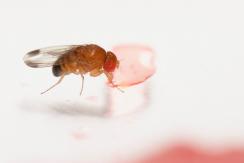
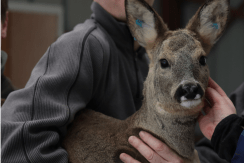
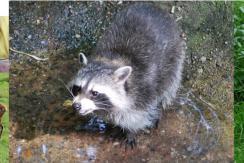
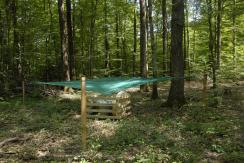
You also, comment on this article